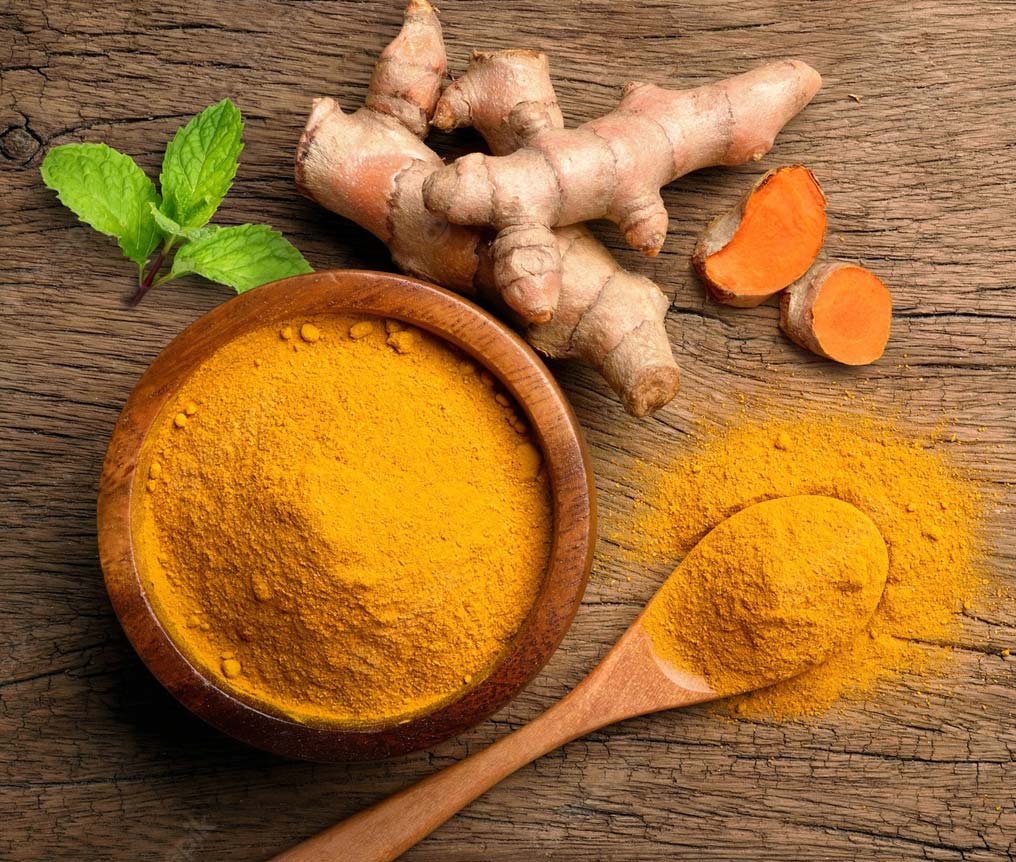


Turmeric is a flowering plant, Curcuma longa, of the ginger family, Zingiberaceae, the rhizomes of which are used in cooking.Turmeric is a common spice that comes from the root of Curcuma longa. It contains a chemical called curcumin, which might reduce swelling.
Turmeric has a warm, bitter taste and is frequently used to flavor or color curry powders, mustards, butters, and cheeses. Because curcumin and other chemicals in turmeric might decrease swelling, it is often used to treat conditions that involve pain and inflammation.
Curcumin, a bright yellow chemical produced by the turmeric plant, is approved as a food additive by the World Health Organization, European Parliament, and United States Food and Drug Administration.
The dried root of Curcuma longa plant of the ginger family, Turmeric is native to the Indian subcontinent and Southeast Asia. Being perennial and Rhizomatous, it requires between 20-30 degree Celsius and a good amount of annual rainfall to grow. The rhizomes are collected every year. They are either used as it is or boiled in water and dried. They are then powdered into an orange-yellow powder.
Native to Asia, Turmeric was initially used as a dye. However, since the discovery of its medicinal properties, it’s been used in Ayurvedic, traditional Chinese medicine, and other forms as well. India is known to have the largest number of species of turmeric with Thailand up close in the second position.
Turmeric Market size was estimated at $4.3 Billion in 2020, projected to grow at a CAGR of 5.7% during the forecast period 2021-2026. Its intrinsic anti-cancer, anti-oxidant, and anti-inflammatory characteristics are boosting its application across end-user sectors, resulting in increased Turmeric Industry demand. Turmeric, or Curcuma longa, is a rhizomatous herbaceous perennial plant of the Zingiberaceae family that belongs to the ginger family.
| Product Description: | The dried rhizomes, fingers or bulbs of turmeric which has not undergone fumigation, sterilization. |
|---|---|
| Botanical Name: | Curcuma longa |
| Country of Origin: | India |
| Pack size:. | 25kg High Density Poly Bags with Inner Liner |
| Appearance/Colour: | Bright orangish yellow colour comes in finger or bulb form |
| Flavour and Odour: | Natural Flavour & Natural Odour |
| GMO Status: | not genetically modified. |
| Particle Size: | 4-8 Inches |
| Shelf Life: | 12 months from manufacturing date, in original unopened packaging under recommended storage conditions. |
| Storing: | Cool, dry place out of direct sunlight; unopened in original packaging preferably in ambient temperatures. |
| Color | Orange-yellow |
|---|---|
| Taste and Smell | Bitter taste with mildly aromatic orange/ginger smell |
| Nutrients | 29 Calories 2.1 gm fiber 6.31 gm carbohydrates |
|---|---|
| Minerals | Iron Potassium Manganese |
| Vitamins | Vitamin C |
| Protein | 0.91 gm |
| Fats | 0.31 gm |